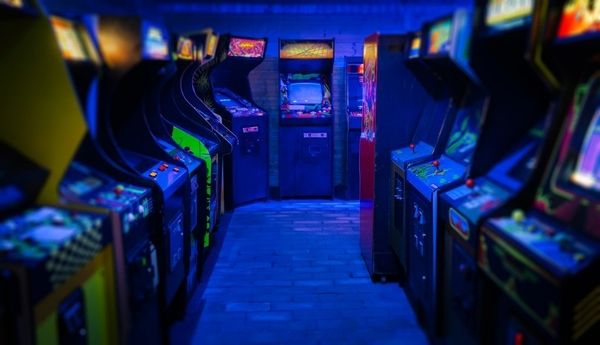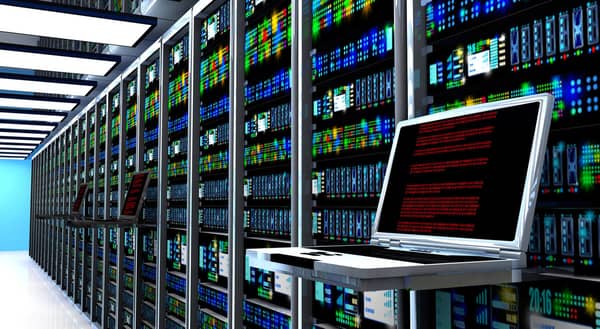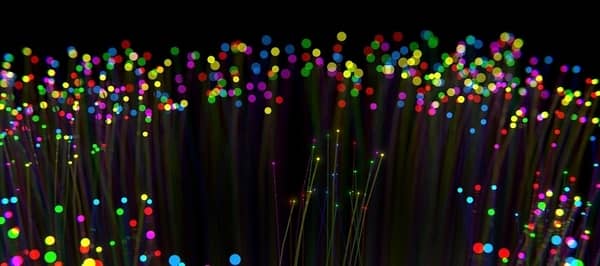
What is Fog Gaming?
August 26, 2020
What Is Advanced Data Center Circuit Metering?
September 18, 2020The world is relying on network capacity to deliver data more and more. Because of this, the data center industry is looking at different ways to keep up with the demand. Dark fiber is becoming one of the commodities data centers are looking towards to develop its operations. While it sounds like something dangerous or something that could be found in the black market, it’s something that is more along the lines of a commodity that is salvaged and reutilized.

Photo Source: ofsoptics
What Is a Fiber Optic Cable?
A fiber optic cable is a network cable with glass fibers inside. These cables are designed for long-distance, high-performance data networking, and communications. Fiber optic cables offer higher bandwidth and can communicate longer distances compared to wired cables. The world’s telephone system, internet, and cable television all use fiber optic cables.
There are 378 fiber optic cables under the sea connecting the entire world. These submarine cables are how the entire world shares data.
What Is Dark Fiber? The Internet of Things (IoT), edge computing, and cloud computing are all growing and are requiring enterprise connectivity to increase and become stronger. Now connectivity doesn’t just grow overnight. It requires a lot of planning, building, and collaboration. Data centers are finding that using dark fiber can be beneficial for building the much-needed connectivity needed in our modern world.
You may be asking what dark fiber is. Dark fiber is fiber optic cables that have already been laid in the ground but aren’t being used. They are called dark fiber cables because they are “unlit” and have no light passing through it. These unused fiber optics cables are there because when these cables are installed into the ground, people plan and install more than needed. This is because the installation into the ground is the most expensive part of the project. The installation accounts for about 90% of the cost, and the other 10% is the cost of the cable. So, they burry as much fiber optic cables as possible. Some of these groups of cables are only running at 50% leaving the other “dark fiber” cables ready to use for any enterprise you want to pay for it.

Photo Source: techspot
Why Should Organizations Lease Dark Fiber Cables?
Dark fiber cables can be useful and beneficial to data centers for many reasons. The first being money. Because these fiber optic cables have already been installed the data centers who decide to lease it will save a significant amount of money. They don’t need to worry about paying for the installation to bury it into the ground.
Dark fiber can also improve latency. Speed is one of the most important aspects of connectivity. A company using a commercial internet service will usually get bounced around to many different points before reaching its end location. Using dark fiber cables allows companies to go straight to their destination. This improves the overall speed and performance of the connection.
It delivers the benefit of redundancy. Physical redundancy can be looked can be viewed as even more important than speed. Certain disaster recovery plans use the same infrastructure, and while this is considered redundant, a natural disaster or any type of disaster can result in both primary and secondary backup to be lost. Having your fiber optic cables will give a company even better redundancy.

Photo Source: wavinThere are many advantages to leasing dark fiber cables, but there are some negative things to consider as well. While companies can save by using cables already installed into the ground, the upfront costs can still be quite high. Dark fiber demands skill, knowledge, and proficiency. Organizations will need to train personnel to manage, expand, and repair the system if something were to happen.
Another disadvantage of dark fiber is availability. While there are certainly dark fiber cables available, not all companies will be able to lease these free fiber optic cables in the location they need.
Buying dark fiber cable isn’t like buying other telecommunication services. It’s like buying the equipment and doing the rest of the work yourself. It must be monitored and serviced when needed. These outages may last longer than other services. Running dark fiber cables needs plenty of attention and requires expertise. The team managing these cables will need to learn how to remotely monitor and maintain the system. This will take time and money. Setting up dark fiber cables for use will require more upfront costs, but in the long-term may cost less than a managed solution.

Photo Source: techcentury
Why Is Dark Fiber Good for Data Centers?
Over the past year, investment firms with data center holdings have been acquiring dark fiber experts, and companies are also targeting the cables themselves. These acquisitions are pointing to the strategic importance of how the industry is looking to take advantage of this opportunity. These dark fibers, if in the proper location, can connect major data center hubs. It also shows where investors are looking to invest. The entire range of digital infrastructure assets will all be a focus for investors. This includes data centers, wireless antennas and fiber, and telecom towers.
Because we are using more data than ever before data centers managers need to ensure their facilities and operations are keeping up with the growing need for faster speeds and greater bandwidth. Dark fiber can give data centers an advantage in the future. Dark fiber has a fixed cost. Internet service providers may not be able to offer the same fixed rate. You can use it in the future to extend the life of your existing cables. With all of these benefits, it makes sense that investors and companies are looking to capitalize on the opportunity found in dark fiber cables.
Conclusion
Dark fiber cables are a hidden commodity that can be utilized by telecommunication companies. These service companies can provide what is called “wavelength” services or simply “waves”. This is done by splitting the light into various wavelength groups. The use of dark fiber cables seems to be catching the interest of investors and operators of different data center companies. There are many advantages to using these unlit and preinstalled cables, but it is more of a long-term solution than a short term one. Companies need to be sure they are in it for the long haul to take advantage of their investments. Many data centers and colocation companies have long-used dark fiber connections to keep customer costs low. And because of the recent investments in dark fiber cables, it seems as though the industry will continue to use these cables now and in the future.

